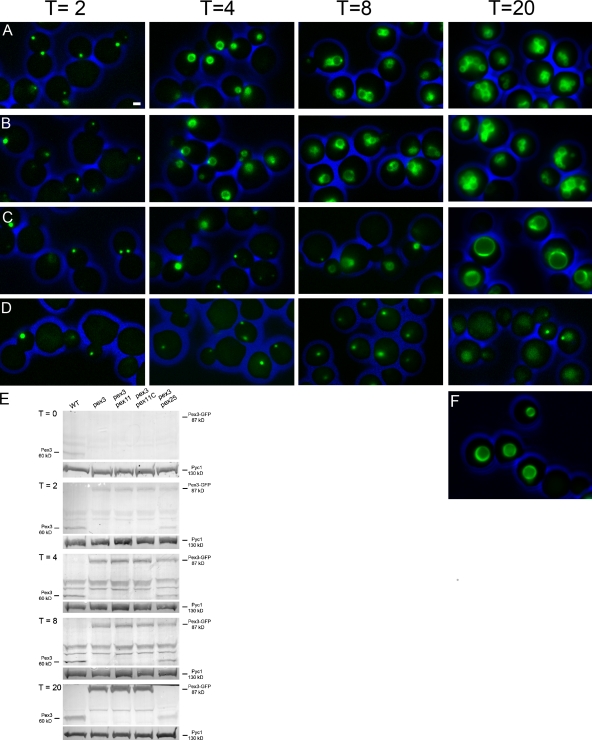Figure 4.
Peroxisome reintroduction in pex3 cells requires Pex25. Pex3-GFP was reintroduced in pex3 (A), pex3 pex11C (B), pex3 pex11 cells (C), or pex3 pex25 cells (D). All strains contained PEX3-GFP under control of the inducible amine oxidase promoter (PAMO). Cells were pregrown on glucose/ammonium sulfate media and shifted (at t = 0 h) to glycerol/methanol/methylamine to induce Pex3-GFP synthesis and peroxisome proliferation. Bar, 1 µm. All images are presented at the same magnification. The cell walls are indicated in blue. (E) Levels of endogenous Pex3 in WT cells and Pex3-GFP levels in the indicated strains grown for 0, 2, 4, 8, and 20 h on methanol/glycerol/methylamine medium. Equal amounts of protein were loaded per lane. Pyruvate carboxylase (Pyc1) was used as loading control. The blots were decorated with anti-Pex3 or anti-Pyc1 antibodies. The additional Pex3 band at t = 2, 4, 8, and 20 h in the pex3 pex25 samples originates from degradation of Pex3-GFP as is reinforced by the absence of full-length Pex3-GFP at t = 20 h (compare also vacuolar fluorescence in D). (F) Peroxisomes marked by GFP-SKL in the H. polymorpha pex11 strain grown for 20 h on methanol/glycerol/methylamine medium.

